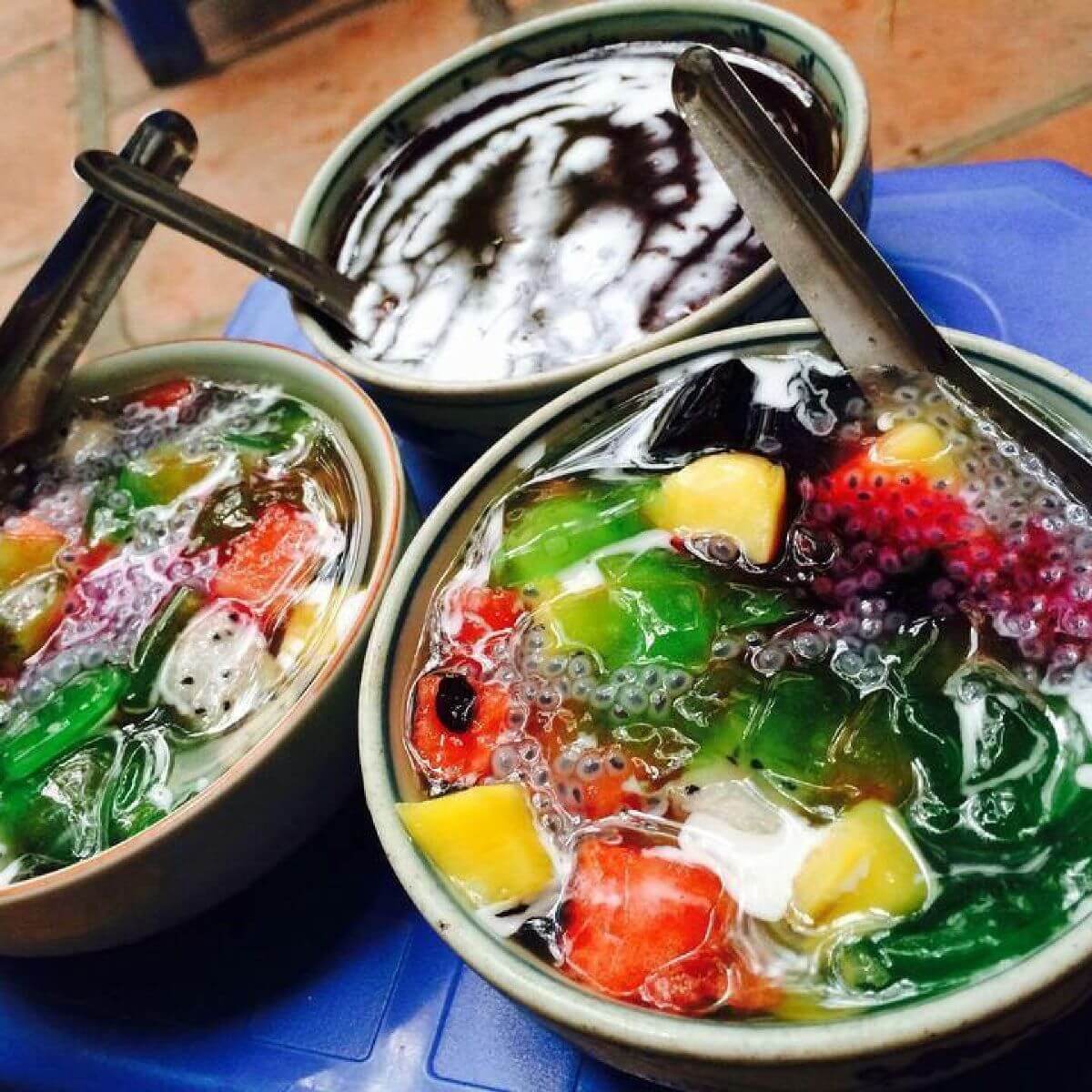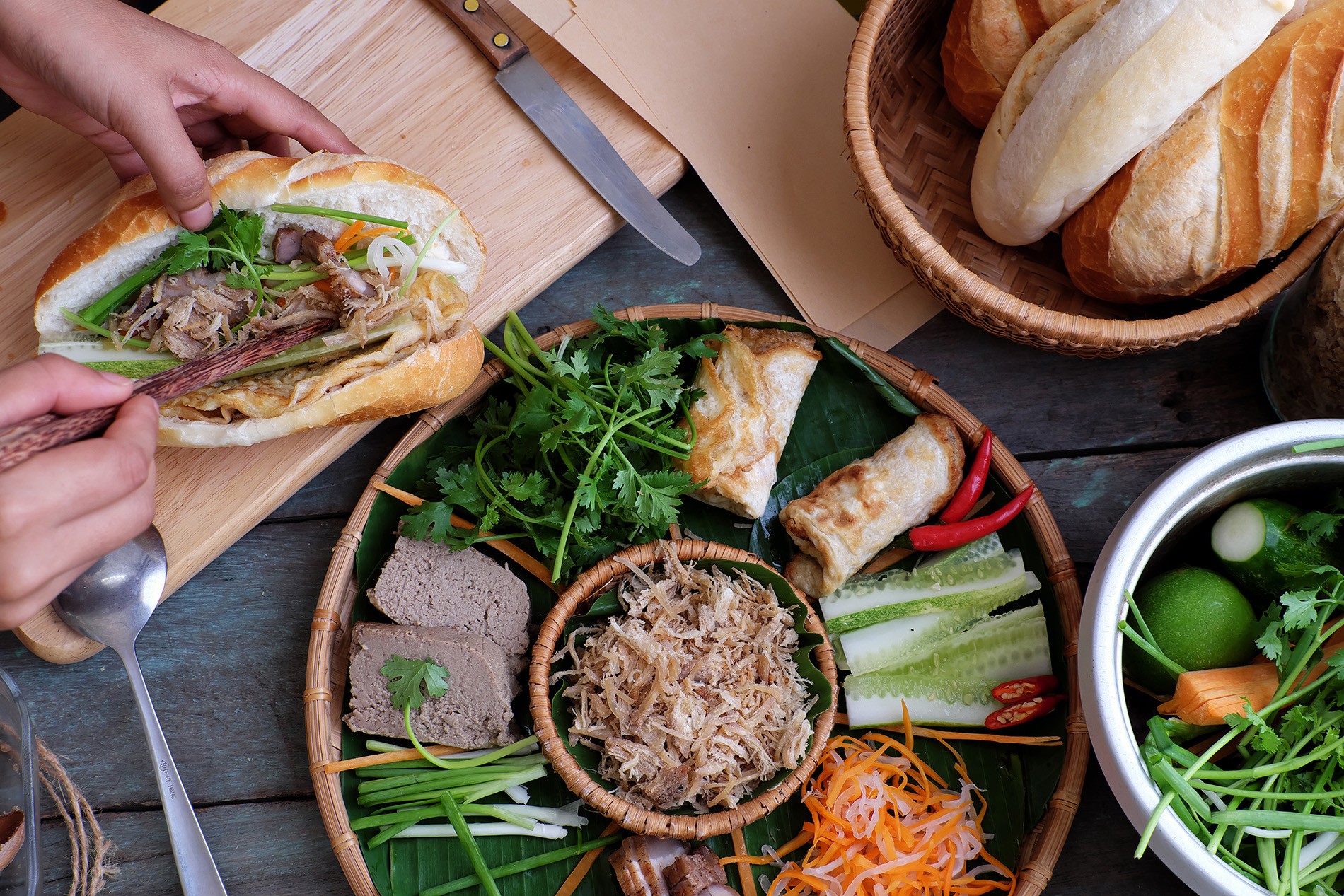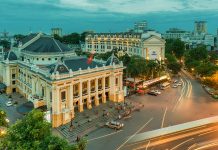Eating street food-style is a social affair; Vietnamese people seemingly don’t like dining solo but prefer the company of others. Illustrative of the nation’s cultural fabric, it is diverse and delicious, crowded and noisy, mobile and inclusive.
Street food vendors include mobile hawkers serving one type of dish such as bun dau mam tom (tofu, noodles and shrimp sauce). They balance equipment and ingredients either end of a bamboo pole. Food stallholders without a fixed storefront serve a small variety of dishes from the same spot each day (such as banh mi baguettes), while permanent street food eateries have extensive menus, and tables and chairs overflowing onto the pavements.
 Street food dining declined during the post-war period due to scarcity of ingredients and food rationing. However, it revived with the 1986 Doi Moi reforms. Increased economic opportunities and daily movement of people encouraged the demand for quick, cheap and nutritious street food.
Street food dining declined during the post-war period due to scarcity of ingredients and food rationing. However, it revived with the 1986 Doi Moi reforms. Increased economic opportunities and daily movement of people encouraged the demand for quick, cheap and nutritious street food.
The best way to enjoy it is to perch on a tiny plastic stool, share a table with fellow diners, outside shop front stalls and pavement cafes, down hidden alleyways, in crowded markets, by bus stops, offices and schools, within a whisker of motorbikes whizzing by ….
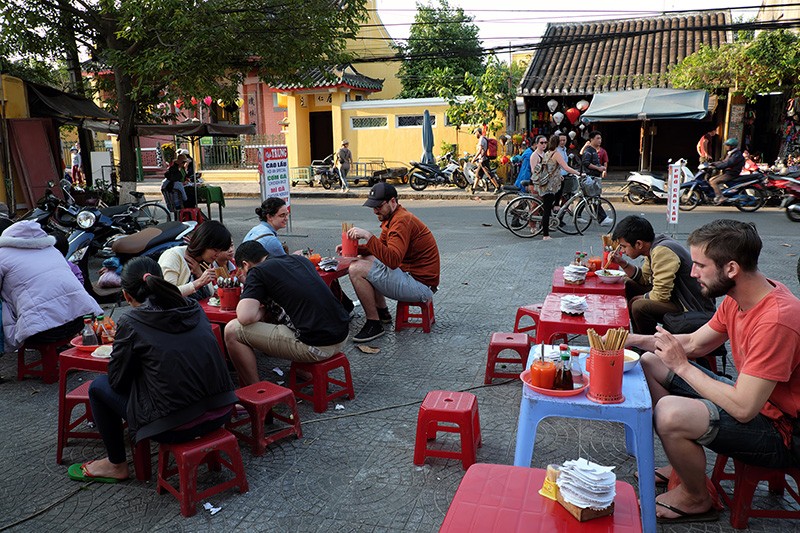 Vietnamese eat on the go with seemingly limitless appetites – on the way to work, a mid-morning break, lunch, a snack on the way home, dinner with family, a midnight feast…
Vietnamese eat on the go with seemingly limitless appetites – on the way to work, a mid-morning break, lunch, a snack on the way home, dinner with family, a midnight feast…
Come on our mini 24-hour Hanoi street food tour as we savor a number of dishes typically enjoyed at certain times of the day.
Breakfast
Originating in Nam Dinh and popularized in Hanoi, Pho is an everyday, any time meal but remains the traditional breakfast dish. An aromatic soup of beef or chicken, rice noodles, spices, spring onion and herbs in a clear fragrant broth. Recipes for the latter are closely guarded family secrets handed down from generation to generation.
 Another northern dish is Bun Rieu Cua. Only available in the early morning, and popular in the summer due to its fresh sour flavor, this is a steaming bowl of beef vermicelli tomato based soup in a spicy crab broth.
Another northern dish is Bun Rieu Cua. Only available in the early morning, and popular in the summer due to its fresh sour flavor, this is a steaming bowl of beef vermicelli tomato based soup in a spicy crab broth.
Lunch
Quintessential Bun Cha is said to have originated in Hanoi, the first bun cha stall was on Gia Ngu in the old quarter. It forever remains the capital’s favorite lunchtime-only dish. Ultra simple and delicious it consists of succulent grilled pork patties submerged a bowl of dipping sauce, with gleaming white bun noodles and a basket of salad leaves on the side.
 Another perennial lunchtime favorite is the unpretentiously cheap Com Binh Dan (trans. ‘commoner’s rice’ or ‘working class rice’) – also known as com bui (dust rice) due to the dusty roadside setting from where the food is served. A com binh dan stall is a mini canteen. One points to the variety of simple dishes, behind a glass unit, such as chicken, fish, tofu in tomato sauce, boiled cabbage and other vegetables…. served with a generous helping of steamed rice.
Another perennial lunchtime favorite is the unpretentiously cheap Com Binh Dan (trans. ‘commoner’s rice’ or ‘working class rice’) – also known as com bui (dust rice) due to the dusty roadside setting from where the food is served. A com binh dan stall is a mini canteen. One points to the variety of simple dishes, behind a glass unit, such as chicken, fish, tofu in tomato sauce, boiled cabbage and other vegetables…. served with a generous helping of steamed rice.
 Late afternoon snack
Late afternoon snack
A popular snack common around Hoan Kiem Lake is Nom Bo Kho. This dried beef salad is often eaten around 4pm-5pm. Made with spicy chili, dried beef, crispy julienned green papaya, herbs and roasted peanuts, this tasty dish fills the pre-dinner gap.
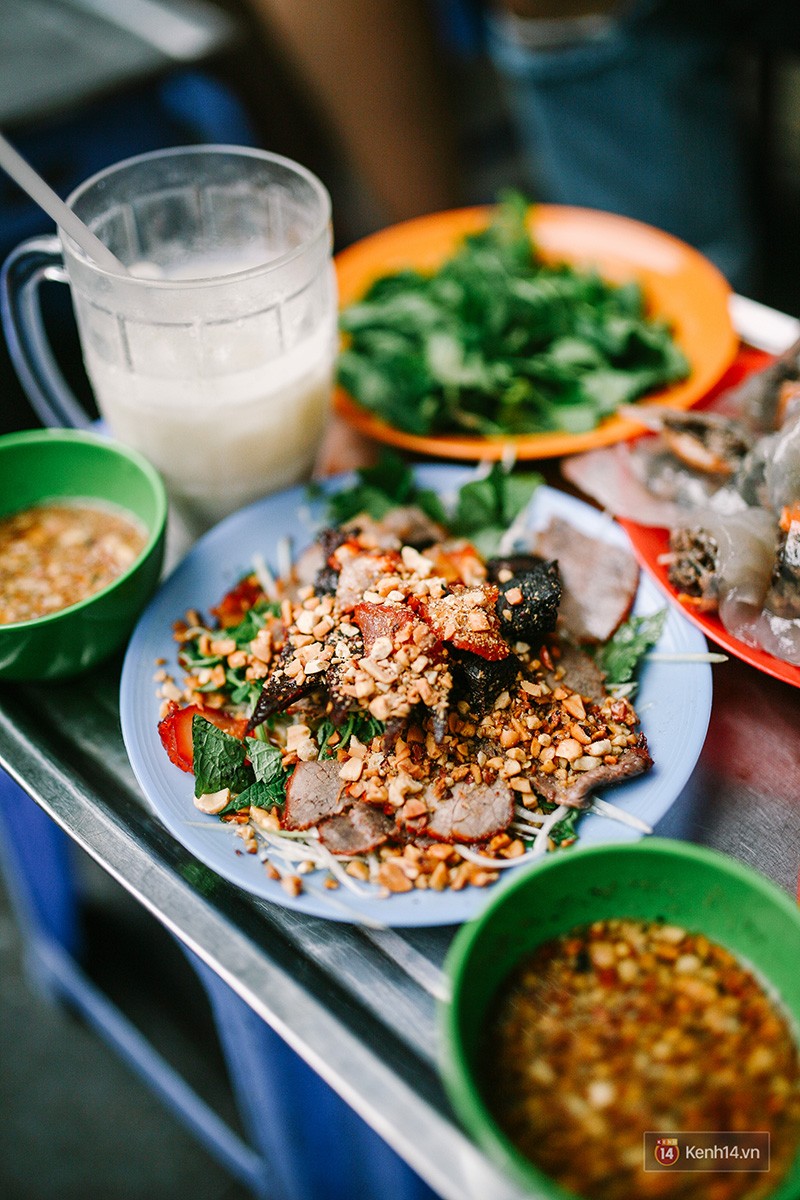 Dinner
Dinner
Banh xeo is a crispy pancake, which may have arisen in central Vietnam during the Tay Son era, or derived from the Cham culture. Whatever the origin, it is a regular feature of roadside dining. One of Hanoi’s best banh xeo stalls is off Ton Duc Thang Street. The dish, named after the sizzling sound it makes on the hot pan, is a rice pancake with turmeric, stuffed with beansprouts, prawns, pork and herbs, self-wrapped in dry rice paper sheets.
 Ngu Xa Island on Hanoi’s Truc Bach Lake is the home of Pho Cuon, a type of fresh spring roll. It is made from soft cooked rice paper sheets, wrapped around aromatic herbs, fried minced beef and pepper. Go to any restaurant in the vicinity and they will serve you Pho Cuon in stacks of 10 cold rolls per plate, served with a dipping sauce made from fish sauce, garlic, seasoning, sliced carrots, green papaya, rice vinegar, a little lime juice, sugar, garlic and chili.
Ngu Xa Island on Hanoi’s Truc Bach Lake is the home of Pho Cuon, a type of fresh spring roll. It is made from soft cooked rice paper sheets, wrapped around aromatic herbs, fried minced beef and pepper. Go to any restaurant in the vicinity and they will serve you Pho Cuon in stacks of 10 cold rolls per plate, served with a dipping sauce made from fish sauce, garlic, seasoning, sliced carrots, green papaya, rice vinegar, a little lime juice, sugar, garlic and chili.

Anytime snacks
There is a myriad of anytime snacks, such as Banh Mi, Vietnam’s answer to the French baguette sandwich packed with meat or vegetables, omelet, daikon, carrots, cilantro, and pate. Or try Banh Tom a deep fried shrimp patty that originated around Hanoi’s West Lake, while for something more filling Xoi is a savory sticky rice accompanied by various meats and dried shallots.
 Dessert
Dessert
For those with a sweet tooth try Thach Dua (coconut jelly) or a refreshing bowl of Che with fruit, beans, seeds, glutinous rice and tapioca powder and coconut milk – both popular in the old quarter. Or around West Lake and Trang Tien Street try Bo Bia, a sweet summer roll with shaved coconut served from box on the back of a push bike!
 Whatever you fancy, street food dining is an informal, improvised nature of eating. the ultimate in al fresco dining and fast food.
Whatever you fancy, street food dining is an informal, improvised nature of eating. the ultimate in al fresco dining and fast food.
